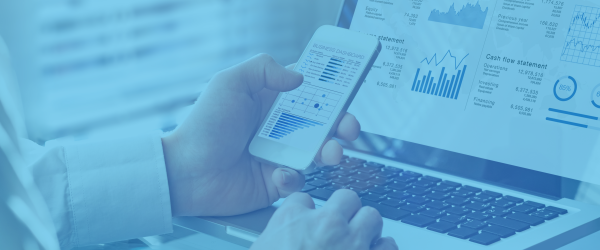If you are diving into the world of finance or simply looking to expand your knowledge about investments, it is essential to understand what cash risk and how it can influence your financial decisions.
This operation is a type of anticipation of receivables where a company sells its future credits, arising from credit sales, to a financial institution. Thus, it is possible for the company to immediately the financial resources it would expect to receive in the future, optimizing its cash flow and reducing the wait for payment from its customers.
According to data from Citi , withdrawn risk is a practice that has been growing among large retailers since 2020. They show that this type of operation has already represented R$3.9 billion of the total R$8.6 billion in accounts to suppliers from Magazine Luiza, and R$2.5 billion of the total of R$9.6 billion from Via Varejo, for example.
Therefore, throughout this article, we will cover all aspects behind cashed risk , from its definition to its practical application in financial markets. Additionally, we will explore the different types of risks involved, strategies to mitigate them, and the advantages of adopting this approach in your investment portfolio.
Stay with us!
What is withdrawn risk?
The withdrawn risk is a financial practice within the business scope, in which a financial institution advances resources to a company, the supplier , relating to installment sales made.
This operation is commonly used in the market to improve the cash flow of suppliers who do not wish, or cannot, wait for payment deadlines from their customers, known as clients .
In order for suppliers to participate in these receivables anticipation operations, they generally assign to the bank the credit rights they would have with the drawee. Thus, the financial institution assumes the credit risk relating to non-payment by the drawee, a condition that justifies the name of the operation.
In short, the withdrawn risk relieves the supplier of liquidity pressure and the risk of default, transforming installment sales into immediate capital available for investments or current expenses.

What is its importance in the current financial context?
The withdrawn risk comes as a relevant alternative in the current financial market, especially in our scenario of economic volatility . As we have seen, by offering financing to companies seeking working capital, it becomes vital to the financial health of organizations by providing immediate liquidity.
Financial institutions such as banks play a key role in offering the cash risk, assuming the credit risk arising from commercial transactions. The importance of these operations reflects their contribution to the stability and growth of companies, while maintaining the active capital flow in the market.
Using the withdrawn risk implies, for the financial institution, a careful assessment of the credit and, often, establishes a closer relationship with the customer. This arrangement finances medium to long-term operations and is mostly related to debt instruments such as bills of exchange or promissory notes.
Therefore, withdrawn risk is an increasingly important tool in the financial ecosystem, helping companies overcome difficulties and allowing banks to diversify their credit operations.
How does drawn risk work?
Risk withdrawal is a financial mechanism that has brought several benefits to companies and suppliers. See below how each step of this process works:
Invoice issuance
In the initial stage, the supplier company issues an invoice for the product or service provided and sends it to the customer.
Advance agreement
The parties involved establish a formal agreement to advance receivables, defining terms and conditions prior to the operation, such as interest rates and payment terms.
Advance request
The supplying company then requests the advance of the invoice amount from a financial institution or the customer, who agrees to advance payment.
Credit analysis
The financial institution carries out a financial analysis, evaluating the credibility of the supplier's credit and the viability of the risk taken.
Release of funds
Once the transaction is approved, the funds are released. The financial institution makes the advance payment of part of the value of the invoices to the supplier.
Payment on due date
When the invoices reach their due date, the customer makes full payment of the amount to the financier or directly to the supplier, as previously agreed.
Closure of operation
Once payment is completed, the risk transaction is completed, ending the obligations between all parties involved.
Risk taken: what is the role of financial institutions?
In the context of withdrawn risk , financial institutions play a very important role. They act as intermediaries in the operation, enabling the anticipation of receivables.
Essentially, as we have seen, they buy the rights to receive products or services from a company providing products or services, paying in advance the amount that would be agreed at a future date.
For companies operating in the market, especially in the retail sector, this service offered by banks can be extremely beneficial. Through the risk withdrawn, they are able to improve cash flow, as they do not need to wait for the payment period normally stipulated in commercial transactions.
Banks and financial institutions assess the risk of the operation before proceeding, determining the interest rate to be charged based on the customer's profile.
The rate will reflect the risk of default, as well as the term of the advance. Therefore, the financial institution is responsible for:
These points show that financial institutions are key players in facilitating access to working capital, which, in turn, allows companies greater capacity for financial planning and investment in their operations.
In this way, withdrawn risk operations contribute significantly to boosting the market, offering flexibility so that companies can better manage their payments and receipts.
What are the main advantages of withdrawn risk?
The withdrawn risk offers several advantages both for companies that opt for this type of credit and for their suppliers . Check out:
For suppliers
In the financial context, the withdrawn risk represents a valuable tool for suppliers seeking effective and strategic . By adopting this operation, they can navigate the market with greater confidence, taking advantage of the advantages presented and minimizing risks associated with receiving payments.
See the main benefits of the risk withdrawn for this category:
Working capital
The withdrawn risk provides an important increase in working capital. By anticipating receivables, suppliers can obtain immediate cash flow for their daily operations, without having to wait for the extended payment terms that are normally agreed with contractors. This means accessible liquidity that can be quickly reinvested into the market.
- Cash flow: immediate increase;
- Reinvestment : ability to reinvest in the business quickly.
Tax benefits
Suppliers can access tax benefits associated with risk-taking transactions. In some cases, the anticipation of receivables may result in tax deductions or tax deferral, which constitutes a competitive advantage in the current financial scenario.
- Tax deductions: possibility of reducing the tax burden;
- Tax deferral: opportunity to postpone tax payments.
Lower risk of default
The withdrawn risk transfers part of the default risk to the financial institution that advances the payments. In this way, suppliers mitigate their liquidity risks by ensuring they receive payments in a more predictable and secure manner, which can ensure greater financial stability in a volatile market.
- Risk transfer: to financial institutions.
- Financial stability: predictable and secure payments.
For companies (buyers)
Buying companies, when opting for the withdrawn risk mechanism, find benefits that range from better payment conditions to the strengthening of commercial relationships. This financial tool directly impacts liquidity and cash flow, in addition to benefiting the entire supply chain. Look:
Better trading conditions
Buying companies that use the withdrawn risk are generally able to negotiate more flexible payment terms with their suppliers. This occurs because there is a financial guarantee involved in the operation, which generates more confidence in the market.
Strengthening commercial relations
The adoption of the withdrawn risk is often interpreted as a sign of credibility and solidity of the purchasing company. This positive perception contributes to the continuous strengthening of relationships with suppliers.
High liquidity and profitability index
Using the withdrawn risk, companies can improve their liquidity due to the possibility of anticipating receivables, which, consequently, can increase profitability.
Obtaining working capital
The withdrawn risk allows companies to buy now and pay later, which optimizes working capital management without mobilizing a large amount of financial resources.
Cash flow management
With more spaced out payments, cash flow becomes more predictable and manageable. This allows for effective financial planning and proper allocation of resources.
Supply chain improvement
More attractive rates and conditions on the risk drawn can reduce the total cost of products and services. This has positive impacts on the entire supply chain, from the producer to the final consumer.
Reducing the risk of supply interruptions
The practice of withdrawn risk minimizes the risk of default and, therefore, reduces the chances of interruption in the supply of essential products for the company.
Risk withdrawn vs. other forms of financing
Drawdown risk is a type of financing that has different when compared to traditional loans and financing. The main difference is in the function of the risk: in the drawee risk, the bank or financial institution assumes the credit risk of the drawee , that is, of the debtor vis-à-vis the assignor, who is the one who stands to receive future credits.
In other forms of financing, such as bank loans and financing, the company taking out the credit bears the full risk , being subject to interest rates based on its payment capacity and credit history. Furthermore, the incidence of Tax on Financial Operations (IOF) on loans and financing increases the total cost for the credit borrower.
The withdrawn risk is often associated with foreign trade operations known as forfaiting . This practice is interesting for companies that wish to discount export receivables and do not wish to assume the risk of default.
On the other hand, loans are more generic and can be used for a variety of purposes, not just in the context of advancing receivables.
Risk taken in retail: practicality and advantages
In retail, the adoption of cashed-out risk can simplify financial management while offering tangible benefits to both retailers and their suppliers. Check out:
Benefits for retail companies
With the risk removed , retail companies can anticipate future revenues, a move that increases liquidity and enables better short-term planning.
Furthermore, a more stable relationship is established with suppliers, as it offers them convenient payment options, which can result in more advantageous negotiations for the retailer.
Impact on the supply chain
By adhering to the risk withdrawn, suppliers are able to anticipate receipt and, thus, manage their cash flow more efficiently, maintaining stable operations.
Thus, the continuity of operations is favored when suppliers have the security of receiving payments in advance, which, in turn, positively impacts the entire supply chain.
Risks and considerations
Before undertaking using the risk withdrawn, it is crucial that companies are aware of the risks involved and the measures necessary to mitigate them. See below some aspects on this subject:
Risks associated with the withdrawn risk
Despite being an extremely advantageous tool, the drawee risk mainly involves credit risk , where the transferor may face the default of the drawee.
This risk is amplified if the operation lacks a bank guarantee or other form of security. Furthermore, economic fluctuations can affect payment capacity, increasing exposure to risk.
How to mitigate these risks
To minimize these risks, companies can:
- Seek bank guarantees or credit insurance;
- Carry out a detailed analysis of the credit profile of borrowers;
- Diversify credit recipients so as not to concentrate the risk in a single recipient.
Legal and contractual considerations
Legally and contractually, it is essential that companies:
- Comply with regulations on debt instruments;
- Draw up clear contracts , specifying the terms of the risk taken;
- Include clauses that detail the responsibilities of all parties involved.
What will the new accounting standard be like for withdrawn risk?
The withdrawn risk is an accounting practice that gained even more prominence after the inconsistencies in the case of Americanas at the beginning of 2023. Therefore, it is a tool that is under new regulation.
The International Accounting Standards Board (IASB) established that, from 2024, there will be new rules for the treatment of these operations in companies' financial statements.
The new accounting standard will determine that withdrawn risk transactions must be explained in detail in the balance sheet. This will imply greater transparency and a more reliable representation of the liabilities and assets involved.
Specifically, the rule requires:
- Clear identification of financing operations with suppliers;
- Disclosure of the nature and terms of operations;
- The impact of operations on the company's balance sheet and financial health.
In summary, the regulatory change aims to mitigate risks associated with these operations, ensuring that investors and stakeholders can better assess the risks present in business financing. The financial market has reacted positively to this change, expecting greater transparency in corporate accounting practices.
Risk taken: future trends
Faced with recent challenges in the financial market, trends in perceived risk point to greater transparency and rigor in accounting. As we have seen, from 2024 onwards, significant changes are expected in the accounting treatment of the risk withdrawn, directly influencing the companies' balance sheets.
These accounting projections are in line with global efforts to standardize financial practices and increase the reliability of financial reporting.
With such regulations, companies will need to adapt to meet the new requirements. This includes improving the processes for disclosing its risk transactions in annual financial statements.
As a result, these practices may affect the way working capital is managed, since withdrawn risk is often used as a financing mechanism.
In short, companies must pay attention to the following topics:
- Investments in the development of internal systems;
- Training professionals for the new standards;
- Anticipation of impacts on financial operations.
It is expected that, with these changes, the financial market will gain robustness and risk transactions will become more transparent, contributing to economic stability and predictability.
Therefore, the tendency is for such changes not only to protect investors, but also to encourage new investments by creating an environment of greater confidence and financial security.
Discover the Skyone marketplace
Now that you know how withdrawn risk works and know the advantages of this powerful financial practice, you need to get to know the Skyone !
Our platform allows clients , suppliers and financial institutions to interact in a secure environment with capacity for high volumes of transactions. We automate all manual work, enabling all receivables anticipation for your suppliers!
Furthermore, the portal acts as a connection point between anchor companies and their suppliers, providing a complete view of financial operations and opportunities to advance receivables.
Learn more about our platform and find out how it can benefit your business in a financial context!
Conclusion
As we have seen throughout the article, companies that implement risk withdrawal tend to experience more efficient financial management , considering that this practice can offer an important source of resources to maintain financial health and liquidity.
Furthermore, the withdrawn risk operation provides reliability in the relationship between suppliers and buyers, as financial institutions are involved to guarantee compliance with payments.
Therefore, an in-depth understanding of the aspects that make up the perceived risk is an essential step towards making solid and responsible financial decisions.
Take advantage and complement your journey of knowledge by learning about 5 strategies for anticipating receivables to maintain the health of your cash flow !





